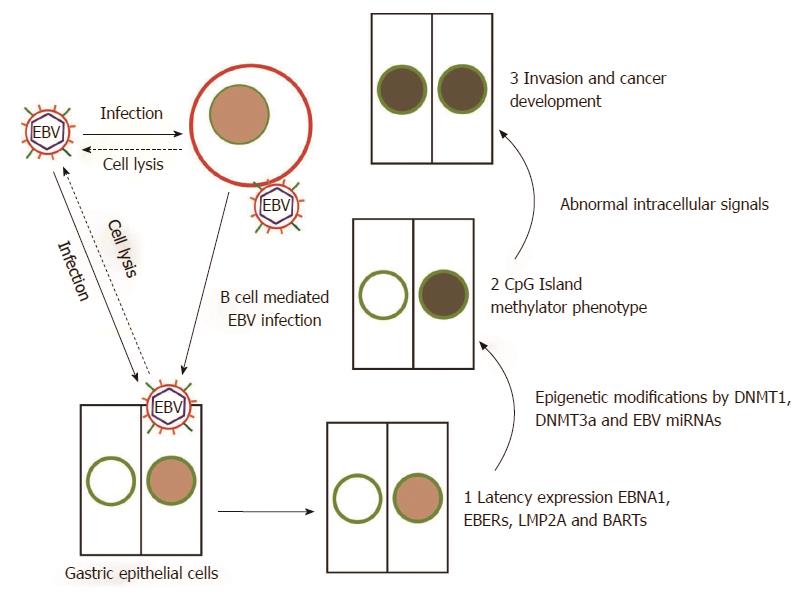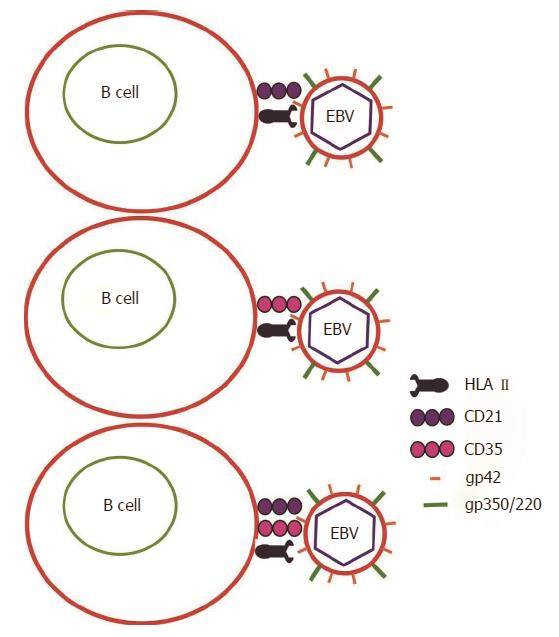Copyright
©2014 Baishideng Publishing Group Inc.
World J Gastroenterol. Jun 7, 2014; 20(21): 6448-6456
Published online Jun 7, 2014. doi: 10.3748/wjg.v20.i21.6448
Published online Jun 7, 2014. doi: 10.3748/wjg.v20.i21.6448
Figure 1 Epstein-Barr virus infects host gastric epithelial cells through direct and indirect mechanisms.
Epstein-Barr virus (EBV) preferentially infects B lymphocytes, which subsequently infects gastric epithelial cells through direct cell-to-cell contact. EBV infection causes expression of latency 1a and/or 1b proteins in gastric epithelial cells. EBV infection also up-regulates genes including EBNA1, EBER, LMP2A, and BART, altering expression of DNMTs and miRNAs. Collectively, the abnormal intracellular signals lead to carcinogenesis and tumour development.
Figure 2 Mechanism of Epstein-Barr virus infection in B lymphocytes.
Epstein-Barr virus (EBV) envelope glycoproteins gp350/220 bind to B lymphocyte receptors CD21 and/or CD35. Simultaneously, viral glycoprotein gp42 interacts with HLA II on the B cell membrane to trigger the core fusion complex, enabling EBV entry into the B cell.
- Citation: Yau TO, Tang CM, Yu J. Epigenetic dysregulation in Epstein-Barr virus-associated gastric carcinoma: Disease and treatments. World J Gastroenterol 2014; 20(21): 6448-6456
- URL: https://www.wjgnet.com/1007-9327/full/v20/i21/6448.htm
- DOI: https://dx.doi.org/10.3748/wjg.v20.i21.6448










